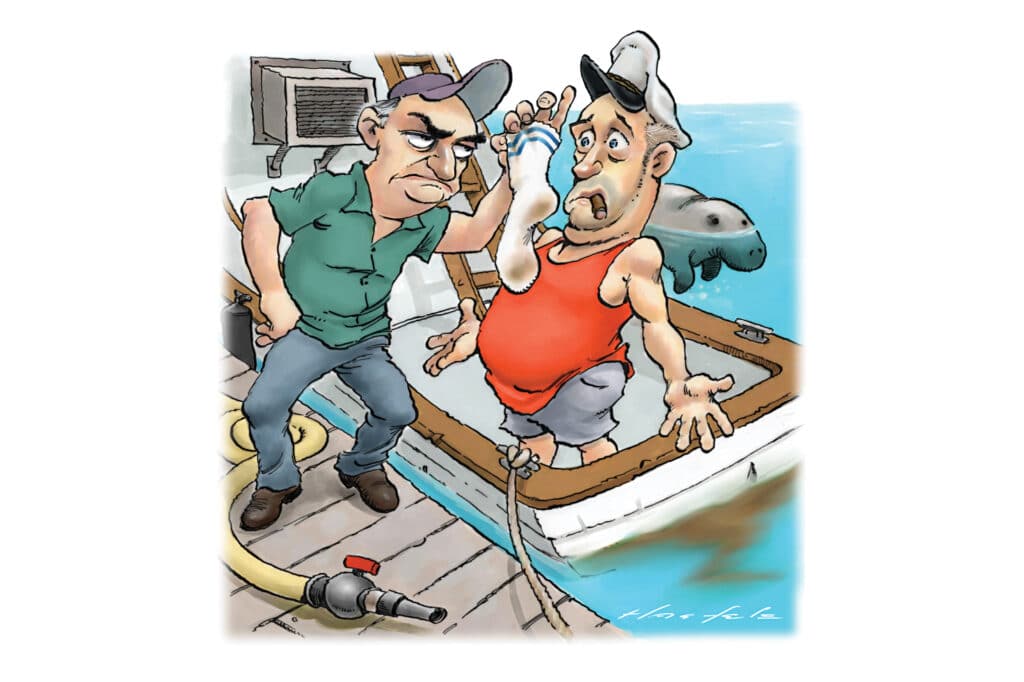
A yacht broker pal of mine called the other day in a panic. He’d been tipped off by a fuel-dock source that one of his customers visiting the area had been blowing ballast (the holding tank) in the harbor. My pal was spelunking through the bilge of his customer’s ride, searching for the misguided waste valve, as the dockmaster was steaming his way. The East Indian manatee came to mind.
Our boat was interred in an old Florida Keys haunt for years. When the town bought the place in the 2000s, one of the first things it did was plumb each slip with a pump-out tap. While it could not have been easier to do the right thing, some boaters were irritated by the update and insisted they were less of a burden on water quality than the “non-native” East Indian manatee. “Make sea cows plug in,” muttered a malcontent who wintered aboard a few slips away.
The skipper’s soggy second home was a stick-built 60-footer struggling to stay afloat. A keen eye would note that the seawater burping from its belly was not from central air conditioning. A decaying window shaker was poking out the salon’s after bulkhead, hidden behind a potted plant. If this boat had a waste tank, it was likely the only thing aboard that was dry.
When plug-in day arrived, the skipper pointed out the new waste hose he’d stuffed through a porthole and assured the dockmaster he was compliant. But this dockmaster was not one to be trifled with. Suspecting subterfuge, he hatched a plan to confirm that goods were flowing through the hose and not into the harbor.
Read More from Jay Coyle: Tell Tales
As the skipper was keen on sundowners and rarely conscious much after sunset, the dockmaster set the trap in the evening twilight, stuffing a clean white sock into the hose at its connection to the slip-side suction valve. He recovered it a week later no worse for wear. Busted.
When I first stepped aboard in the 1960s, whether you pumped a lever or pushed a button, waste’s final destination was no more than a few feet from the departure gate: over the side. Savvy boaters considered going overboard in a marina akin to a death sentence. When holding tanks were mandated in the 1970s, the industry and boaters shrugged. As a boat designer, I found clients’ interest in waste management focused on how to get it off the boat as quickly as possible. Pump-out facilities were a novelty, and waste tanks were easily bypassed.
Times have changed. Given modern onboard waste systems and easy access to pump-out facilities, there’s no excuse for souring the seas. It turns out it was fellow boaters that ratted on my pal’s customer.
Perhaps there is hope, but as I write this, signs warning of high levels of enterococcus bacteria are being posted near two overstuffed marinas in town, and I still hear reality-challenged boaters blame the “non-native” manatee. Fun fact: Florida is not the East Indian manatee’s second home. It’s native.









